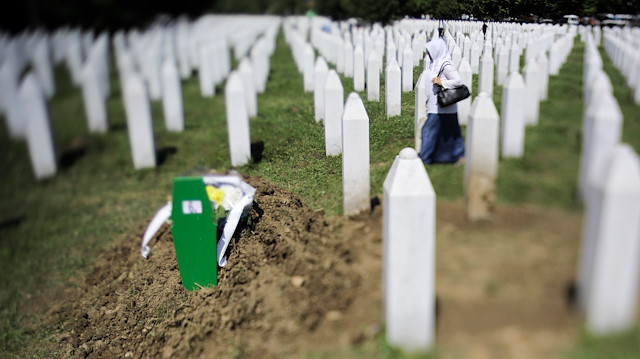
Through new museum, Bosnia aims to convey brutality of 1995 Srebrenica genocide to future generations
Personal belongings of the victims of the 1995 Srebrenica genocide, where over 8,300 Muslims were killed by Serbian forces, are set to go on permanent display, conveying the brutality of the massacre to future generations.
The items are set to be showcased at a museum within the Potocari Memorial Cemetery in the city of Srebrenica, in eastern Bosnia and Herzegovina, said Azir Osmanovic, the museum’s curator.
The museum will spotlight items found during excavations of mass graves as well as personal items donated by the victims' relatives.

It aims to show the reality of genocide, so it is not forgotten, as a lesson for future generations.
So far, wristwatches, torn clothes, and ID cards of the victims are among the donated items.
- ‘Every object tells a story’
Osmanovic told Anadolu Agency that they started the project about three months ago, in order to not forget the brutality of a quarter-century ago and so it is never repeated.
"We also collect items we think belong to the victims by combing over places where those who tried to escape the genocide were," he said.
He added that they have collected nearly 350 items so far and each tells a story.
Hajra Catic, who lost her son Nihad during the genocide, is one of the donors.
Nihad, just 26, was a journalist during the war, and his mother believes that he was unable to reach a safe zone.
Nihad's body has yet to be found, but his mother clings to the hope that at least some part of his remains will turn up someday.
"If we want the genocide to not be forgotten, we should write and talk about it and deliver the evidence we have," said Catic.
Amra Begic Fazlic, who lost her father Resid during the genocide, said that they did not know how to protect her father's belongings.
"I donated my father's last letter, wristwatch, and glasses that he sent us via Red Cross vehicles.”
- Deadly siege and massacre
Srebrenica was besieged by Serb forces trying to wrest territory from Bosnian Muslims and Croats to form their own state.
The UN Security Council had declared Srebrenica a "safe area" in the spring of 1993. However, Serb troops led by Gen. Ratko Mladic – later found guilty of war crimes, crimes against humanity, and genocide – overran the UN zone.
The Dutch troops failed to act as Serb forces occupied the area, killing about 2,000 men and boys on July 11 alone. Some 15,000 Srebrenica residents fled into the surrounding mountains, but Serb troops hunted down and killed 6,000 of them in the forests.
More than 8,000 Bosnian Muslim men and boys were killed after Bosnian Serb forces attacked Srebrenica in July 1995, despite the presence of Dutch troops meant to act as international peacekeepers.
Hello, the comments you share on our site are a valuable resource for other users. Please respect other users and different opinions. Do not use rude, offensive, derogatory, or discriminatory language.
The floor is all yours.








